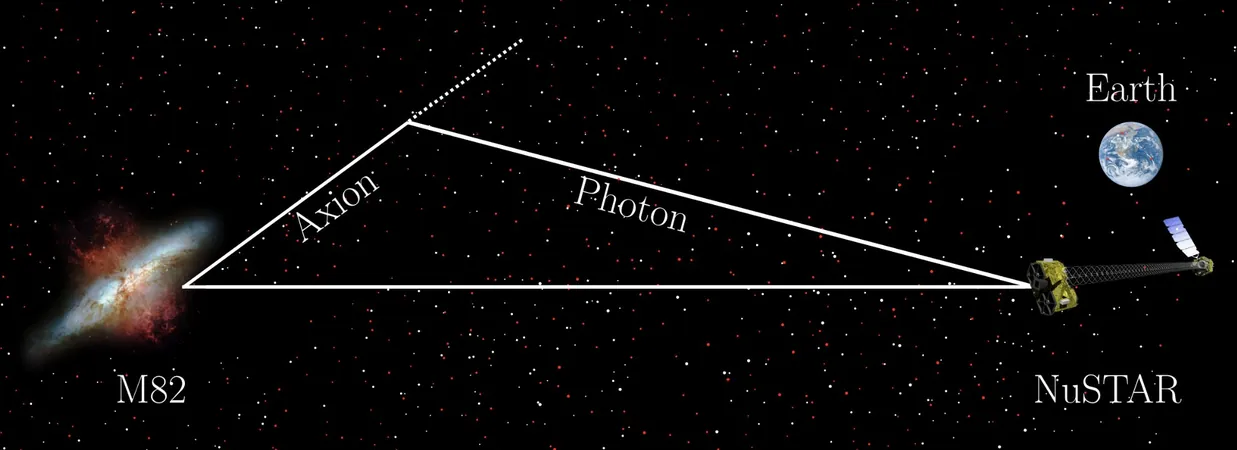
Unleashing the Speed: How a Genetic Mutation Makes Horses Athletic Legends
2025-05-01
Author: Michael
Have you ever wondered what makes horses some of the top athletes in the animal kingdom? A groundbreaking study from researchers at Johns Hopkins Medicine has uncovered a genetic mutation that may hold the key to their remarkable speed and endurance.
These scientists have traced a significant evolutionary development occurring millions of years ago that optimized the equine physique for speed and stamina. This discovery reveals how horses 'run through' a genetic stop signal, a mechanism only seen before in viruses—an insight that could enhance our understanding of genetic disorders in humans.
The NRF2/KEAP1 Pathway: A Genetic Marvel
The research, collaboration with Vanderbilt University’s Castiglione Lab and partially funded by the NIH, delves into the NRF2/KEAP1 genetic pathway across horses, donkeys, and zebras, published on March 27 in the journal Science. This pathway is crucial for defending against damage caused by reactive oxygen species (ROS), harmful molecules that can lead to cellular deterioration.
NRF2, known as a protective protein, combats the cellular damage from these unstable molecules while enhancing energy production essential for physical activity. KEAP1, its counterpart, acts as a sensor, regulating NRF2’s availability to shield cells from injury.
A Genetic 'Stop' and the Workaround
Diving deeper, researchers identified a genetic mutation in the KEAP1 gene specific to horses, donkeys, and zebras. This mutation creates a premature stop codon—a signal that typically stops protein synthesis. Surprisingly, in horses, this stop codon is bypassed, enabling the production of a functional KEAP1 protein, a feature that is not common in humans, where such mutations can lead to diseases like cystic fibrosis.
Intriguingly, this bypass is achieved through an evolutionarily developed molecular mechanism that enhances the KEAP1 protein's ability to detect ROS. As a result, horses can generate the high levels of energy required for intense physical exertion while simultaneously protecting their cells from damage.
The Athletic Advantage
The research highlights how this genetic adaptation explains equine athleticism. The enhanced NRF2 pathway allows for increased energy production while safeguarding against exercise-induced cellular stress. This study not only confirms an evolutionary achievement specific to horses but also sheds light on potential therapeutic interventions for chronic and age-related diseases.
Furthermore, the unique strategy that horses employ to bypass genetic roadblocks may offer new avenues for treating genetic disorders linked to premature stop codons in humans.
A Collaborative Effort
The study involved contributions from a diverse team at institutions including the University of Kentucky and the University of Pennsylvania, funded through multiple NIH grants and additional foundations. Researchers like Elia Duh, M.D., have emphasized the importance of this pathway, paving the way for future advancements in both veterinary and human medicine.









 Brasil (PT)
Brasil (PT)
 Canada (EN)
Canada (EN)
 Chile (ES)
Chile (ES)
 Česko (CS)
Česko (CS)
 대한민국 (KO)
대한민국 (KO)
 España (ES)
España (ES)
 France (FR)
France (FR)
 Hong Kong (EN)
Hong Kong (EN)
 Italia (IT)
Italia (IT)
 日本 (JA)
日本 (JA)
 Magyarország (HU)
Magyarország (HU)
 Norge (NO)
Norge (NO)
 Polska (PL)
Polska (PL)
 Schweiz (DE)
Schweiz (DE)
 Singapore (EN)
Singapore (EN)
 Sverige (SV)
Sverige (SV)
 Suomi (FI)
Suomi (FI)
 Türkiye (TR)
Türkiye (TR)
 الإمارات العربية المتحدة (AR)
الإمارات العربية المتحدة (AR)